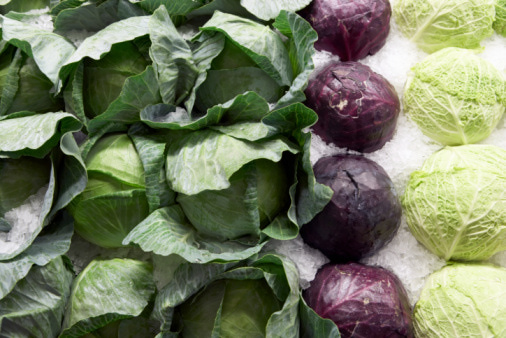 No matter what color cabbage you choose, you really can’t go wrong. Purple cabbage and green cabbage are both very low in calories and high in fiber and nutrients. But, there is one major difference before getting into what’s in purple cabbage and green cabbage. Continue reading to learn more about Purple Cabbage Vs. Green Cabbage
No matter what color cabbage you choose, you really can’t go wrong. Purple cabbage and green cabbage are both very low in calories and high in fiber and nutrients. But, there is one major difference before getting into what’s in purple cabbage and green cabbage. Continue reading to learn more about Purple Cabbage Vs. Green Cabbage
Purple Cabbage helps fight Inflammation
One test-tube study using an artificial model of the human gut found that certain varieties of purple cabbage reduced markers of gut inflammation by 22–40%.
And in other studies, applying cabbage leaves to the skin also appears to reduce inflammation.
For instance, adults with arthritis who wrapped their knees in cabbage leaves once per day reported feeling significantly less pain by the end of the 4-week study.
Plus, cabbage leaves appear to reduce breast pain, swelling, and inflammation due to increased milk supply and blood flow during the early postpartum period
There are also some distinct differences between the two, especially when it comes to vitamins:
Vitamin A
Purple cabbage has 10 times more vitamin A than green cabbage. Both types of cabbage contain vitamin A in the form of the carotenoids beta-carotene, lutein and zeaxanthin. Beta-carotene is an antioxidant that can also be converted into the vitamin A you need for vision and to keep your skin and immune system healthy. Lutein and zeaxanthin function only as antioxidants in the eyes. One cup of chopped purple cabbage has 33 percent of the recommended daily intake of vitamin A. The same portion of green cabbage only has three percent.
Vitamin K
Green cabbage is the winner when it comes to vitamin K, but they’re both good sources. One cup of chopped green cabbage has 57 percent of the daily intake, compared to 28 percent in purple cabbage. Vitamin K regulates bone mineralization, which impacts bone density. Women with lower bone density have an increased risk of hip fracture, so they can greatly benefit from cabbage.
Vitamin C
Vitamin C is a valuable antioxidant and purple cabbage has a good amount of it. Adult men need 90 milligrams daily and women need








